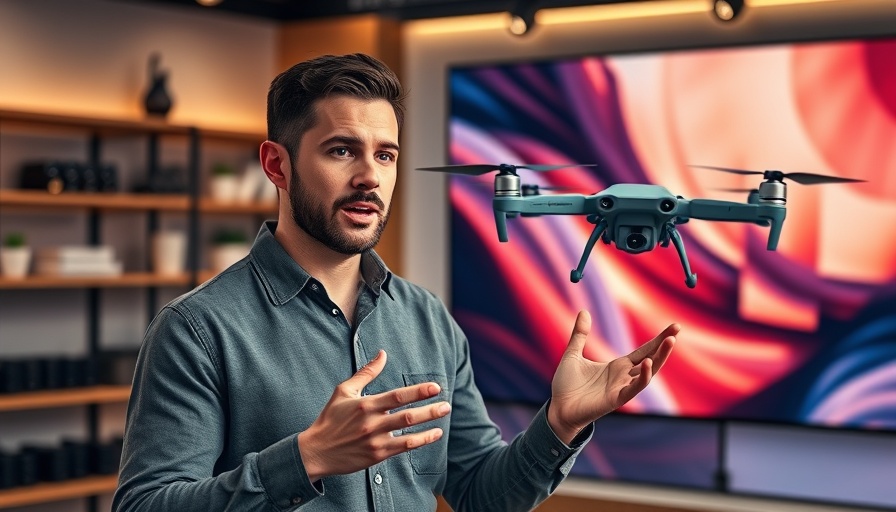
The Future of Drone Operations: Beyond Visual Line of Sight
The recent announcement from the FAA regarding its proposed rulemaking (NPRM) for beyond visual line of sight (BVLOS) operations marks a critical turning point in the drone industry. With the intention to streamline a previously complex waiver process, this new rule could revolutionize how drones are employed across various sectors, from package deliveries to agricultural monitoring. Currently, operators face the challenge of navigating through a sea of regulations for BVLOS operations. With this proposed standardized framework, we're looking at the potential to unlock unprecedented economic opportunities. The proposal includes operational caps at 400 feet and imposes significant requirements regarding remote ID technology and safety measures. Moreover, the subordinate requirement that operators must seek FAA approval for specific flight areas is paramount. Yet, the surprising aspect of this proposal might be the eliminated requirement for operators to possess FAA certifications for certain BVLOS conditions. Will this open the floodgates to untrained operators, or will it foster new lines of safety practices? Only time will tell.
In Drone News: Part 108 NPRM, Update on Drone Collision in TX, and Major Leaks on DJI Mini 5 Pro, the discussion dives into the evolving landscape of drone operations, exploring key insights that sparked deeper analysis on our end.
Understanding the Multifaceted Drone Collision Incident
In a recent incident in Kurville, Texas, a military Blackhawk helicopter suffered a midair collision during a time of urgent rescue operations, highlighting the pressing need for clearer drone regulation and safety measures. Initial reports pointed fingers at an unauthorized civilian drone as the culprit. However, further investigation revealed that the drone in question was part of an authorized search and rescue operation, albeit malfunctioning. This serves as a critical reminder of the delicate balance public safety pilots must maintain while operating alongside commercial drones. Not only does this underscore the complications of drone airspace management, but it raises pivotal questions about operational protocols, emphasizing the need for robust safety training across both military and civilian drone operators. This incident ultimately stresses a common theme: safety can never be compromised.
Speculations on the DJI Mini 5 Pro: What We Know So Far
The technological buzz continues as leaks reveal specifications for the anticipated DJI Mini 5 Pro. Promising features such as an enhanced 1-inch camera sensor and upgraded gimbal could prove transformative for hobbyists and professionals alike. The potential to shoot 4K videos at 120 frames per second indicates a significant leap from its predecessor. However, the absence of the traditional weight category tagline on the leaked packaging raises eyebrows. With the sub-250g category offering significant regulatory freedoms, the question soon becomes: Will this drone break the weight limit? If it does, this could alter the landscape for countless drone pilots reliant on the ease of operation that comes with lighter drones. Thus, the importance of these developments transcends mere specifications, pondering the implications they hold on future drone regulations and the market.
Why This Matters: The Broader Implications for Drone Enthusiasts
Regulatory changes like those proposed by the FAA can stir apprehension among drone enthusiasts and industry professionals alike. As technology evolves, so too must the systems governing it. The introduction of BVLOS operations presents a possibility for expanded uses of drones — bringing economic and practical benefits across sectors. However, safety remains paramount; advancement should not outpace the establishment of necessary safeguards. As discussions unfold, major events such as the Commercial UAV Expo will play a vital role in shaping these conversations, bringing professionals together to navigate emerging challenges. Staying connected and informed is crucial in this rapidly evolving landscape, underscoring the importance of industry forums in fostering dialogue. This environment can allow stakeholders to raise concerns, share experiences, and ultimately, push for a more balanced approach to drone regulation.
Final Thoughts: Embracing the Evolving Drone Landscape
As we move forward, the integration of drones into daily operations is inevitable, but how we approach this revolution will define its success. The FAA's NPRM is promising, but the industry must tread thoughtfully as the balance between innovation and safety becomes increasingly critical. Only through informed discussions and collective industry engagement can we ensure that drone operations are both effective and secure. Engaging with groups like Pilot Institute during key events will be essential for staying ahead of the curve to navigate these changes effectively. Key takeaways include the need for increased safety training, proactive consultation with regulators, and vigilance in observing how products evolve — like the potential of the DJI Mini 5 Pro.
 Add Row
Add Row  Add
Add 




Write A Comment